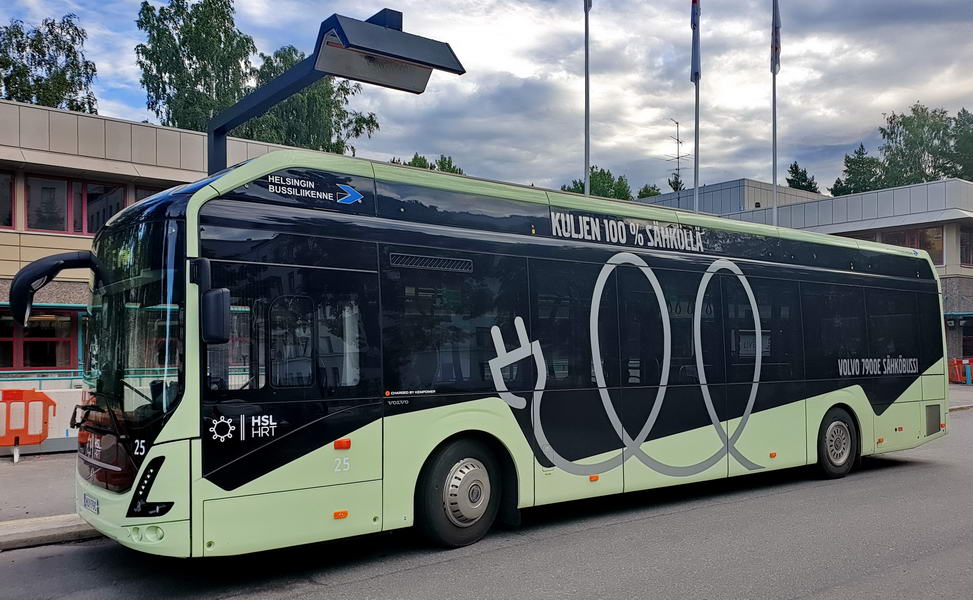
A couple of days ago I got a fully electric Volvo 7900E bus for a test. I drove around the city for a long time, got impressions, I share them.
The impressions are very positive, and I hope they will not be considered an advertising post.
This is not news at all, these buses. They have been produced for two years, in various modifications. Many countries have them. But in Helsinki this is news and an event.
This bus is a logical continuation of the line of electric transport.
First, there were Volvo hybrids, which most likely the company will no longer buy.
Then all-electric Linkker buses were brought in for the test .
Linkker is charging.
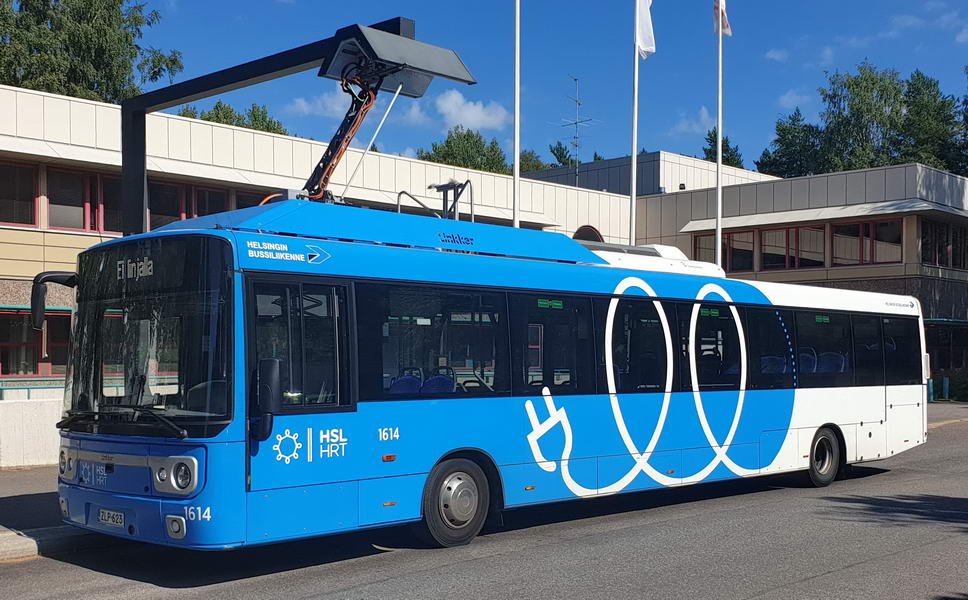
. 3 .
, .
— ,
.
. , .
, «», .
. .

. 3 .
, .
— ,
.
. , .
, «», .
. .
Pantograph Linkker
.
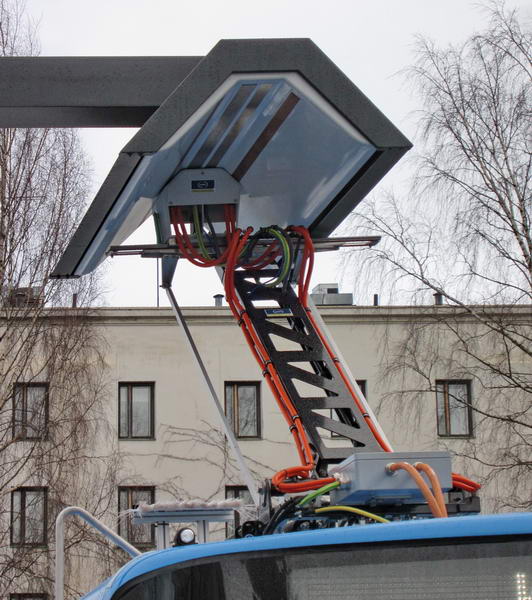
, , .
1,2,3 . 1 — . 2 —
. 3 — . 4 — ,
.
2-3 , , ? — 10 .
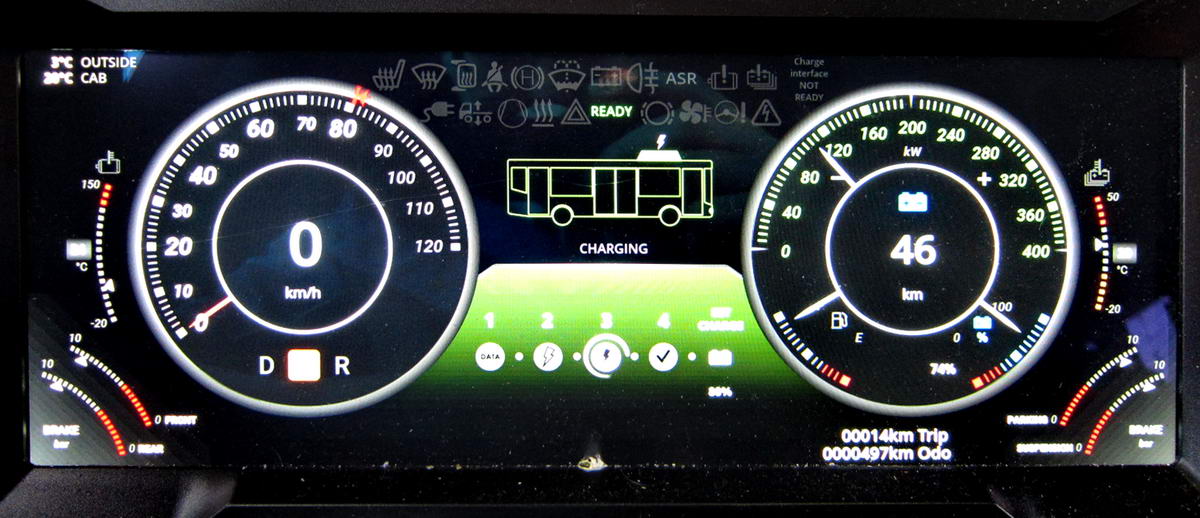
Linkker, , .
, ,
.
: , .
, . —
, .
. :
«» — .
. «» —
. — .
, «»,
, .
. .
, — . ,
.
,
, .. , . ,
, ,
, .
, ,
. , -
. .
, «». .
- , . .
.
, , .
, . ,
, .

, , .
1,2,3 . 1 — . 2 —
. 3 — . 4 — ,
.
2-3 , , ? — 10 .

Linkker, , .
, ,
.
: , .
, . —
, .
. :
«» — .
. «» —
. — .
, «»,
, .
. .
, — . ,
.
,
, .. , . ,
, ,
, .
, ,
. , -
. .
, «». .
- , . .
.
, , .
, . ,
, .
Volvovites have a very long experience in the design of professional equipment.
And they use their experience with might and main. First, the idea of an electric drive was tried on the controversial hybrid bus Volvo 7700. The designers also put their lascivious hand to the interiors of the hybrid.
But then the Volvos learned from the long-term operation of the hybrid and covered the song in a new way. The result is a classic that does not give soot.
With this model, Volvo tells potential buyers: you take what you are used to for many years. Your drivers don't have to be stressed by a thousand incomprehensible buttons, they just sit down and drive.
The bus company received one Volvo 7900E bus for annual testing. It's good that we got it in the summer, so that we could catch the main glitches before the cold weather, and in the winter we can start testing in difficult conditions.
The product turned out to be damp, there are minor flaws, there are still items from the hybrid in the tidy menu. Probably, testers will throw off their comments to developers, and it is possible that they will even fix something. Because the product needs to be promoted, and the previous models were a little "underdeveloped", and customers remember that.
It is extremely necessary to test electric buses, since the bus fleet, located almost in the city center, is due to undergo a major overhaul in a year. They are going to make a completely environmentally friendly enterprise out of the park. Will make a two-level parking lot for vehicles. There will be trams on the ground floor. The second is electric buses.
The city wants clean air, so diesel buses will be pushed out of the city, where they are used. Since it is difficult to use electric buses on commuter and long-distance routes.
Feeling of driving
Acceleration is very confident, smooth and powerful, not sharp, without jerks.
Which is understandable, due to the lack of a multi-stage gearbox, which the devil knows how are configured on diesel buses. They go with dips and jerks.
And here - a very pleasant feeling, especially in comparison with the diesel bus engines stifled for the sake of fuel economy, many of which go uphill as if on their last journey.
On an electric bus, climbing uphill is only slightly slower than accelerating on a flat road.
Those. on diesel, you stepped on the pedal - and you wait for a reaction for a long time.
On the electric one, he stepped on, and only have time to turn the steering wheel and fit into the turns.
But in reality, of course, no one drives like that. It is necessary to provide comfort to passengers so that they are not thrown off the seats.
I also assume that on an electric bus the acceleration dynamics will be stifled over time in order to save battery power. The maximum speed was still limited. It was 85 km / h, we did 80 km / h. Because city flights capture fragments of traffic on highways where the
limit is 80. Well, so as not to drive.
The bus is equipped with a 2-speed automatic transmission.
First, there is acceleration in the first gear up to 35 km / h, then a dip of half a second, and then acceleration continues in the second.
Retarder
As soon as the accelerator pedal is released, regenerative braking is immediately activated. Not aggressive, it even feels like the car is coasting. But the electricity consumption control arrow shows that the battery is charging. This is certainly a blessing. As many diesel and electric buses have a separate retarder handle that is adjustable. And here there is full automation, which works very well, there are no complaints at all. When the brake pedal is depressed, regenerative braking starts unconditionally. The more the brake is pressed, the more actively the battery is charged. At the end of braking, the pneumatic brakes come into play. All this together gives a very smooth brake operation. It is so nice and soft to stop on a diesel bus - you have to try hard.
Steering
The steering wheel is so light that at first it seems that it is not connected to anything. When the bus is stationary, you need to apply a little more force to rotate, but it is still too easy.
For smooth driving, the steering wheel must still be tighter. Well, or the effort should change depending on the speed. Therefore, it is rather a minus, however, it is quite solvable, if the developers wish. But many drivers say this is a plus, as the arms and shoulders don't get tired in a day. Nevertheless, you need to get used to a steering wheel that is too light so that the bus does not get stuck in turns. In addition, a light steering wheel provokes one-handed steering, which in winter will come out sideways if you have a bad habit.
Appearance
It would seem that the appearance is very different from other buses in the city.
Since a few years ago the city adopted a single standard for coloring (blue and white), and on the sides a wire with a plug is drawn, and it is written that the bus is electric ... But no one looks at it at all.
Passengers come up to the driver and ask why the bus is not making noise?
Also, no one pays attention to the fact that the bus is much higher. Since the batteries
are on the roof. No, this is not a controversial decision, they cool well there. Well, they freeze in winter.
But this weight on the roof does not violate the balance, since the frame is heavy, everything is calculated. The bus does not lurch around corners. And the on-board computer does not inflate the pillows. Everything goes smoothly.
Right view.
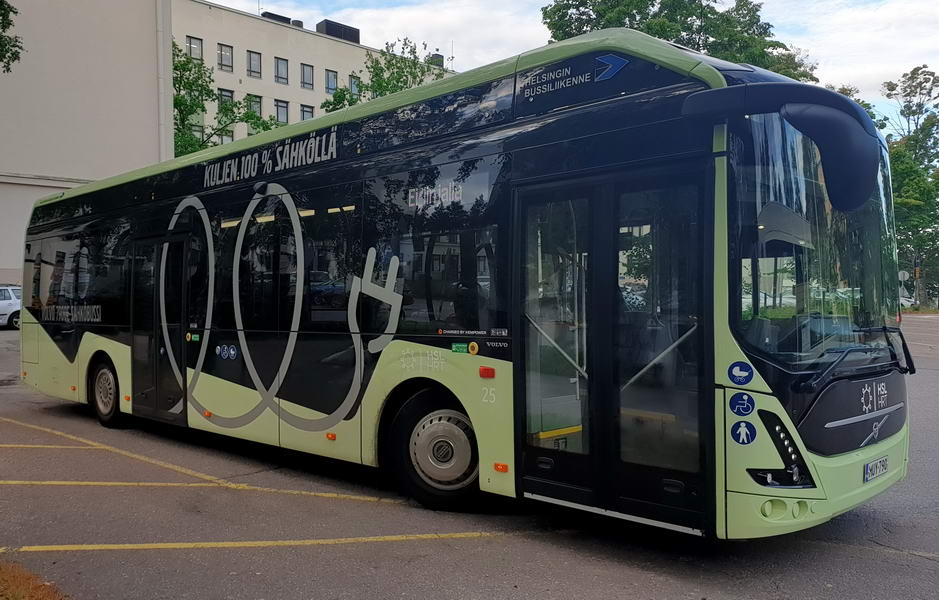
. , ..
. ,
, .
, .

. , ..
. ,
, .
, .
Salon.
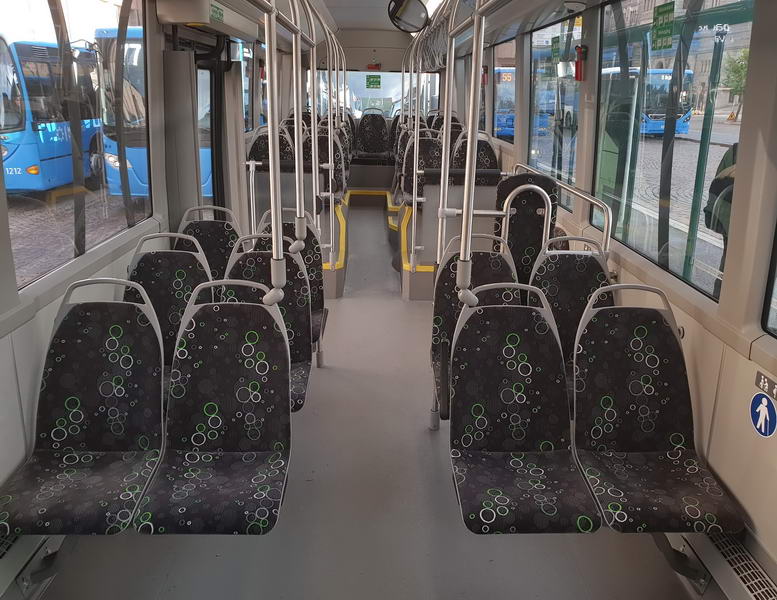
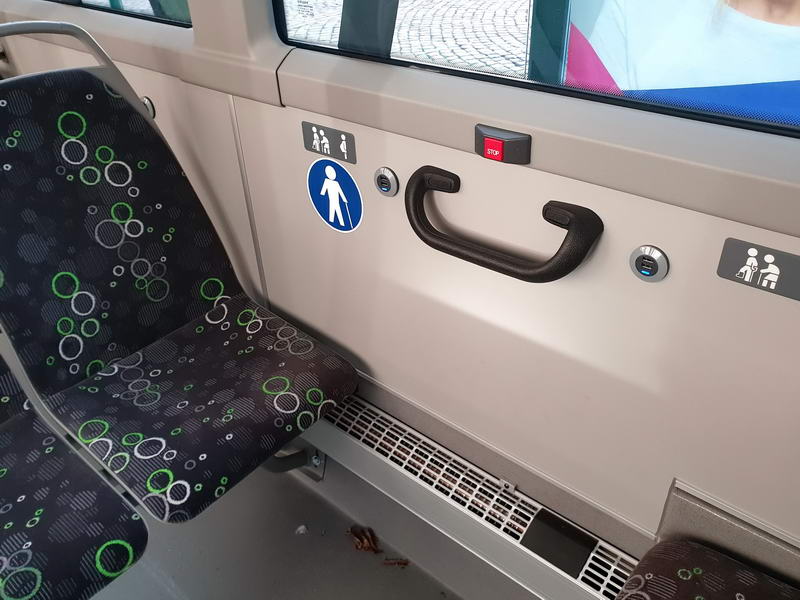
. , , , « » .
, , . , . , . - . , , .


. , , , « » .
, , . , . , . - . , , .
Thank God doors with electric drive. And the door lock is finally set up fine,
no need to wait at the bus stop for the lock to release and the doors open.
And this is saved time, and the driver does not get mad by pressing the door open buttons a hundred times.
At the edges of the doors there is already a familiar sensor that senses that someone has been pushed by the door, and then the
door will open itself.
Climate control is exactly the same as on all other buses.
The climate on Volvas is not their strong point. The first years it works, and then it dies if not serviced. It is expensive to maintain, so after 3 years only the interior fans remain. But in winter it will still be warm (often), since the batteries are liquid.
Driver's cab.


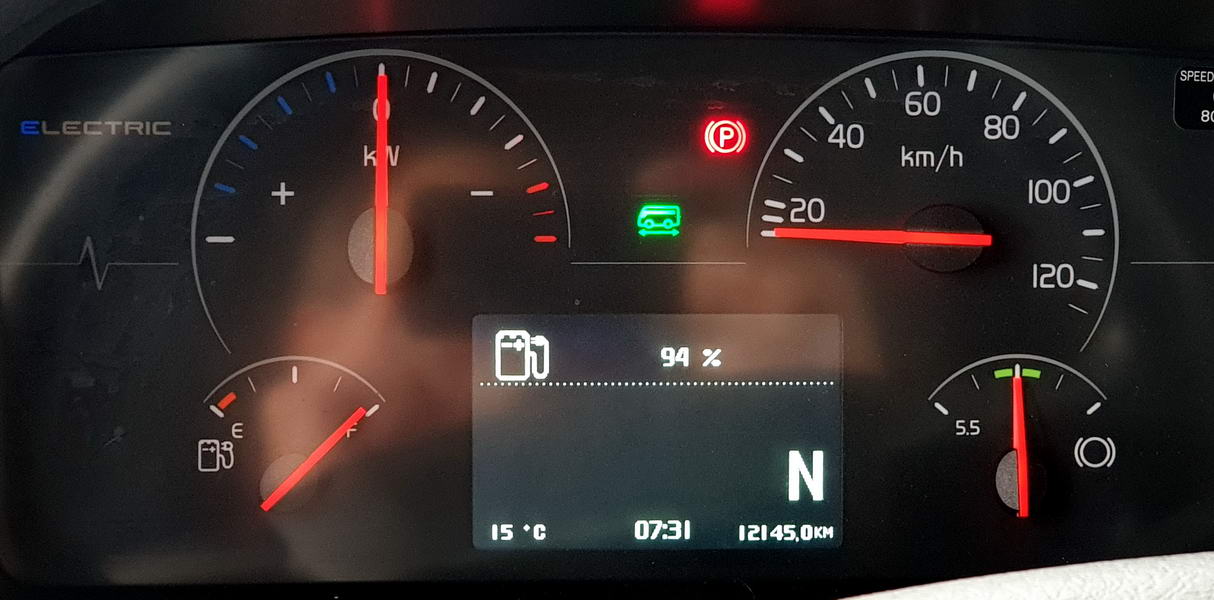



There is nothing to say about the driver's cab! It's just the cab of a regular Volvo bus.
Nothing new has been added. Only if you look at the dashboard, you can see that there is an inscription Electric, there is an energy flow meter and a dial gauge for charging the battery. On the left, near the parking brake, there is a circular fuel level scale for the interior heater. Yes, it is still more profitable to heat the cabin with diesel fuel and webasto.
The driver's seat is standard for city buses, it has all the necessary adjustments.
The interior mirrors are finally equipped with an electric drive.
Street mirrors sacrificed design by hanging them on beautiful (and damn expensive)
plastic-coated brackets. And in vain, because they will quickly break off anyway ...
But in general, this is a prototype of the bus, if they buy a batch, then all the little things will be removed.
Electricity
Fast mobile charging
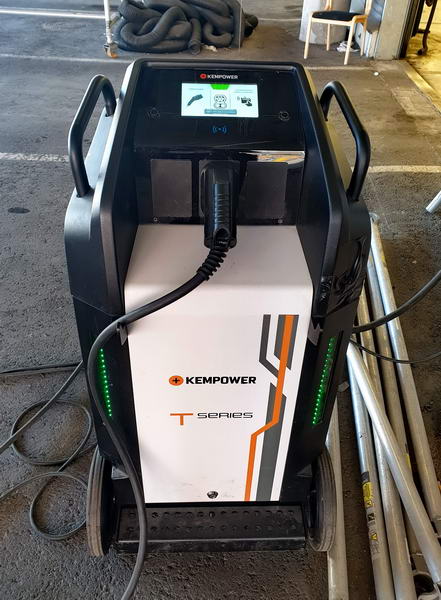
.

.

.
, .
— 40 .

.

.

.
, .
— 40 .
Initially, the planned basic scheme of using the bus was as follows:
- in the morning and evening rush hours (this is approximately 4 hours), the bus runs
- in the afternoon, during a break (another 4 hours) is on the charge in the park
- the bus is charging in the park at night
But since there is only one bus, and it would be necessary to drive it as much as possible, they ordered to build a stationary charging station at one of the terminal stops. So that the bus can draw a little energy while it is standing. Of course, a 10-minute charge will not be enough for a whole circle, but at night the bus was already charged, and this should increase the travel time.
I asked how the batteries would feel with frequent high-current charges, and how many years they would last. They replied that they would live normally and the batteries would not die quickly.
The technology for the production of bus batteries and their capacity were difficult to say.
Reading this link here did not give full explanations, since options are possible.
Stationary charging
The cabinet is designed to charge one bus, with a capacity of 120 Kilowatts.
Cabinet installation.
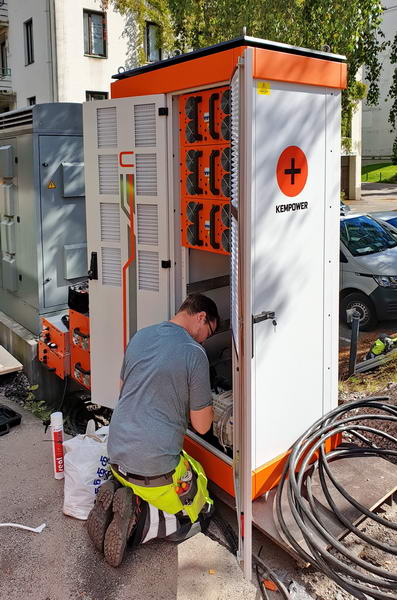
.

, , .
, , . .

.

, , .
, , . .
Charging pole.
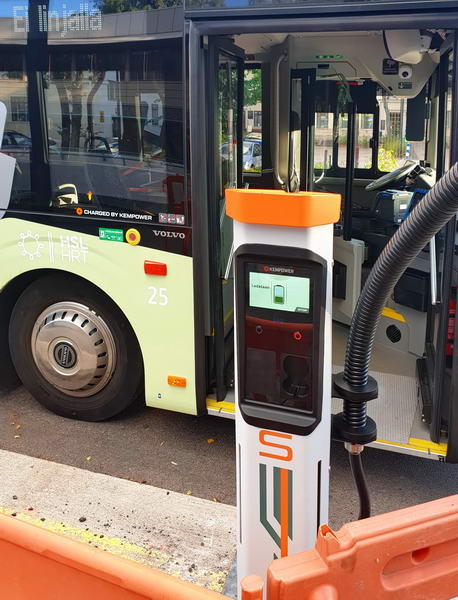

A charging pole with a cable and a charging gun was placed at the bus stop. The driver gets out and connects the gun to the bus.
The main thing here is not to rush, and not to leave with the cable.
(This is of course a joke, because when the front hatch is open, under which there are connectors,
the magnetic sensor of the hatch will not allow the bus to start).
Bus connectors.
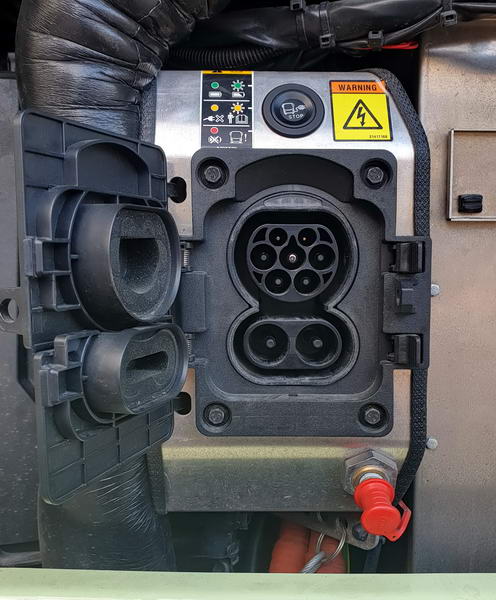
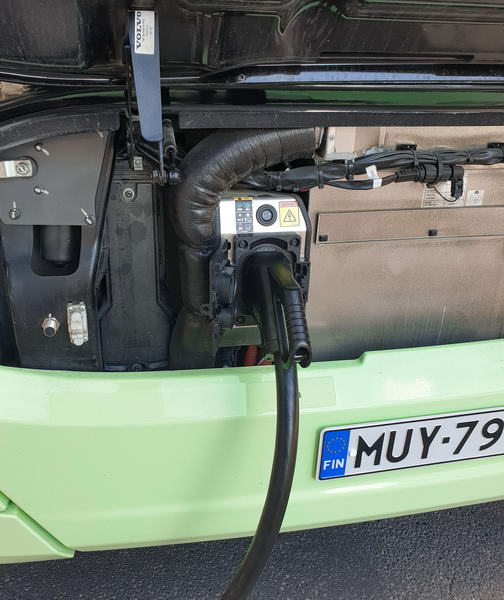


First test of a stationary charger.
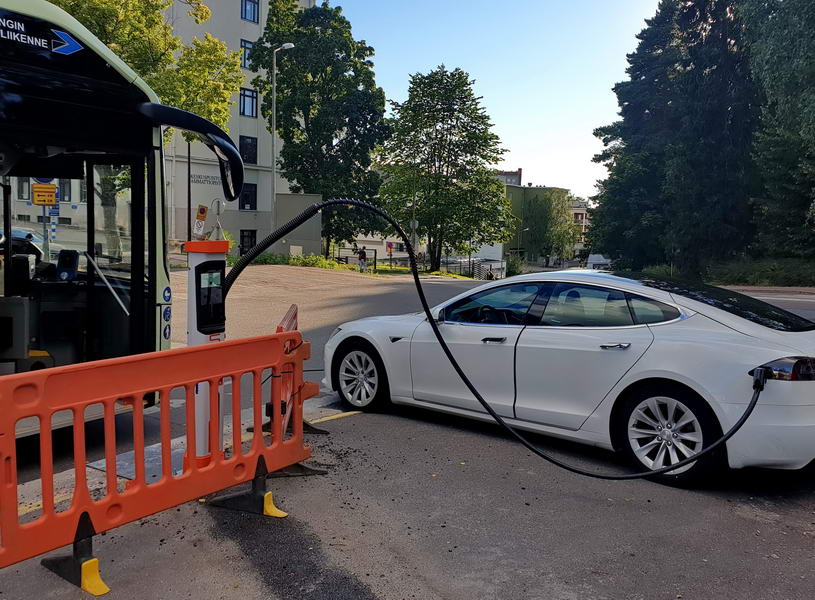
. .
, . , .
, .
, , ? , , . , .
.
, .
. , , . . .

. .
, . , .
, .
, , ? , , . , .
.
, .
. , , . . .
Why do you need a second charger if you already have one?
, .
, . , -…
3 Linkker.
.
. , - Linkker.
.
, , , . , , , Linkker.
, .
, . , -…
3 Linkker.
.
. , - Linkker.
.
, , , . , , , Linkker.
, .
conclusions
If you do not pay attention to the little things, then we can say that the bus is already quite suitable for the end user, i.e. bus driver. This is certainly not a correct phrase, since the buyer is the bus company that operates the equipment and bears all the costs.
But the driver drives directly. Convenient technology makes the job easier, and therefore the results will be better. It is easier to get on the schedule if acceleration is good and braking is predictable and smooth. A comfortable fit means less fatigue, and therefore the driver will not be angry and rude to customers.
In a year we will see how it all ends.
UPD.
In connection with the questions, I supplemented the article. Text and photo under the spoiler "Pantograph Linkker"